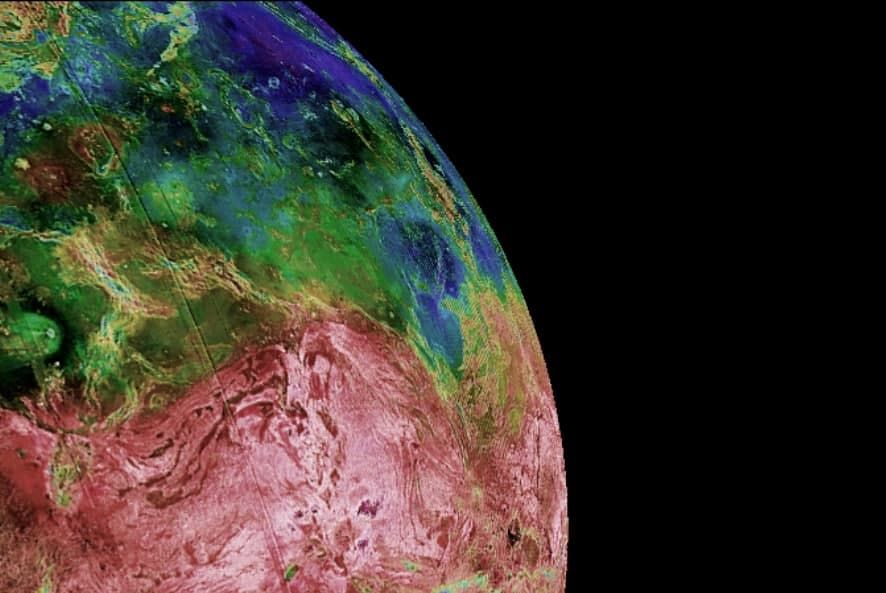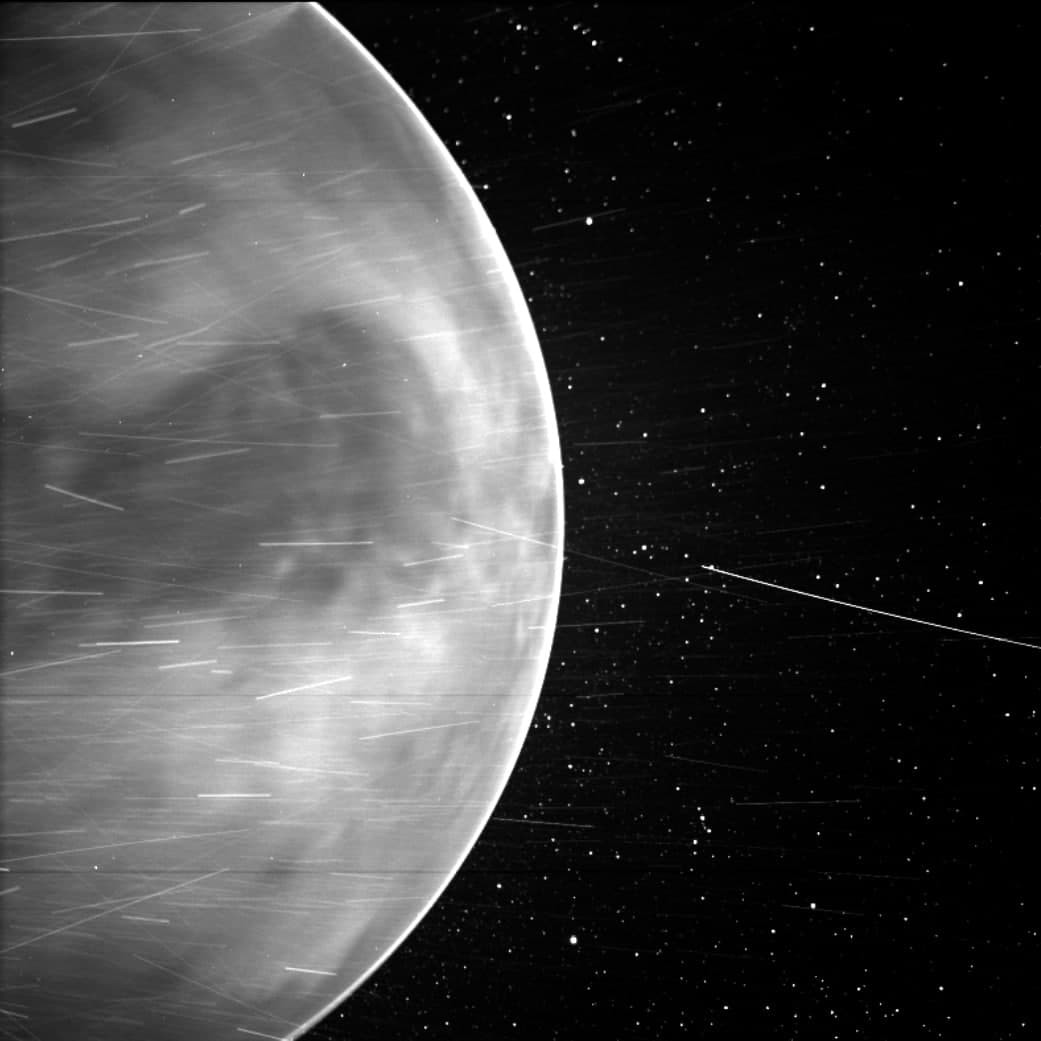NASA’s Parker Solar Probe has taken its first visible light images of the surface of Venus from space
15:48, 11 February

Photo: NASA
According to NASA, smothered in thick clouds, Venus’ surface is usually shrouded from sight. But in two recent flybys of the planet, Parker used its Wide-Field Imager, or WISPR, to image the entire nightside in wavelengths of the visible spectrum and extending into the near-infrared.
- Share on Facebook
- Share on VK
- Share on Twitter
The first WISPR images of Venus were taken in July 2020 as Parker embarked on its third flyby. WISPR was designed to see faint features in the solar atmosphere and wind.
“The surface of Venus, even on the nightside, is about 860 degrees,” Wood said. “It's so hot that the rocky surface of Venus is visibly glowing, like a piece of iron pulled from a forge.”
As it passed by Venus, WISPR picked up a range of wavelengths from 470 nanometers to 800 nanometers.
Such images of the planet, often called Earth’s twin, can help scientists learn more about Venus’ surface geology.

Beyond looking at surface features, the new WISPR images will help scientists better understand the geology and mineral make-up of Venus. When heated, materials glow at unique wavelengths. By combining the new images with previous ones, scientists now have a wider range of wavelengths to study, which can help identify what minerals are on the surface of the planet.
This information could also help scientists understand the planet’s evolution. While Venus, Earth, and Mars all formed around the same time, they are very different today.
“Venus is the third brightest thing in the sky, but until recently we have not had much information on what the surface looked like because our view of it is blocked by a thick atmosphere,” said Brian Wood, lead author on the new study and physicist at the Naval Research Laboratory in Washington, DC.
soyuz.by






